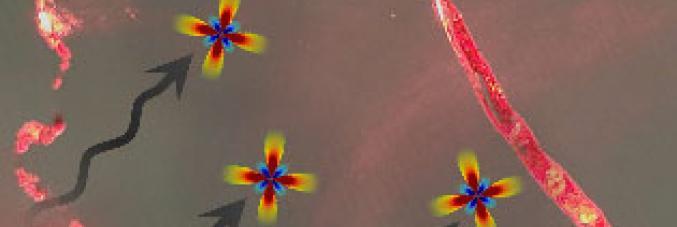
Research – Exposing Glass to X-rays
17.11.2023
Under small stresses, all solid materials behave elastically, even glass. With deformations proportional to applied stress, even glass reacts to a form of elastic-like springs, as external forces return to their initial shape once the stress stops. When deformation exceeds its yielding point (which depends on the material), glass begins to present a "plastic" response. Part of the deformation becomes permanent and nonreversible. Plastic deformation corresponds to a succession of microscopic events. As groups of about ten atoms, close in on each other, they move in a coordinated manner. This nonreversible displacement sees new atomic positions that remain even as the external stress dissipates.
The succession of these microscopic events can give rise to spectacular phenomena in glass. If pulled sufficiently, glass reaches a point of failure in which the plastic zones become so numerous that the properties of the system itself change. When most glass (like silicate glass) reaches its yielding point, it shatters. Other glasses, like some plastics, are more ductile and begin to flow as a real liquid would. The macroscopic measurements observe the responses of the system to mechanical stresses. However, many questions remain unanswered, especially how to measure the collapsing motion of atoms. Studying the failure point in oxide glass is very difficult because glass usually shatters in tension, but by irradiating it with X-rays, it is possible to use atomic resolution with classic laboratory techniques.
Recently published in Physical Review, the collaborative research held at the University of Padua, the University of Trento, the DESY Center of Hamburg, and the University of Brussels entitled Reaching the Yield Point of a Glass During X-Ray Irradiation was led by Professor Giulio Monaco of the Galileo Galilei Department of Physics and Astronomy of the University of Padua.
Researchers used a synchrotron-based technique to explore the elastoplastic response of glass at the atomic length scale. The light produced in large electron accelerators, such as the DESY one in Hamburg, shows how X-ray beams absorb radiation doses billions of times greater than those for medical purposes. When these beams hit glass, the atoms displace from their initial position and begin to move.
Prof Giulio Monaco explains, “Such a phenomenon demonstrates that these atoms do not follow the laws of simple diffusion, but rather more complex processes such as hyper-transport. We witnessed how such mechanisms, originating from the absorption of X-rays, can bring glass to its yielding point so that we may study how the mechanical properties change at its atomic scale.”



